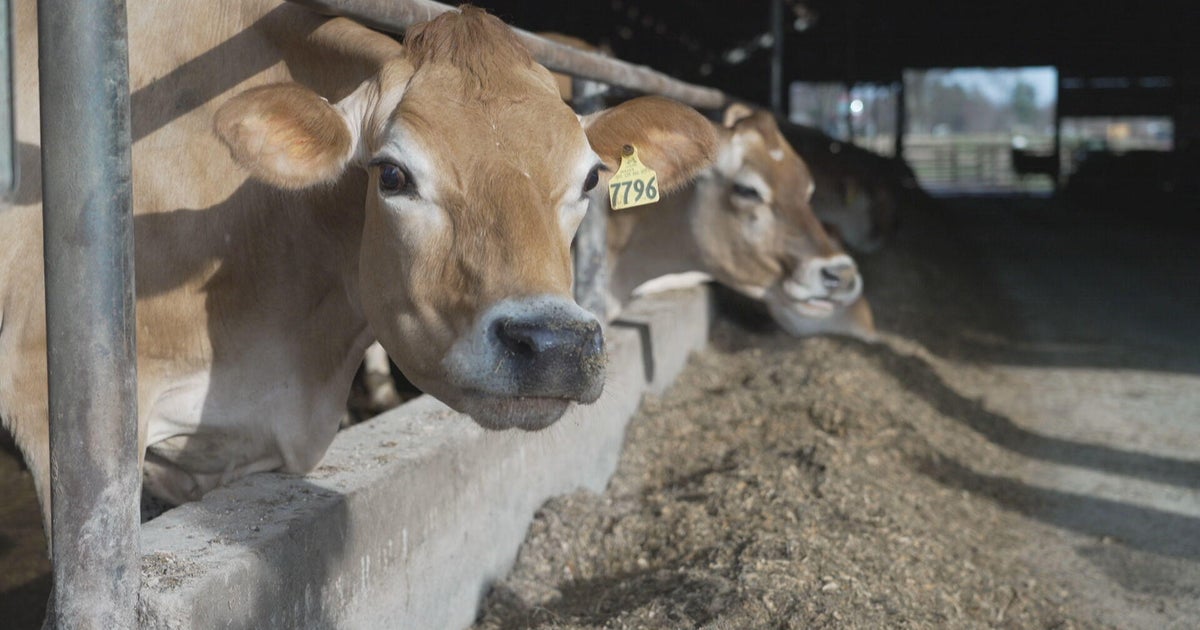Treetop science: Measuring the changing climate's effects on California sequoias
Today in our Eye on Earth series, we are walking among giants – the huge sequoia groves of California that draw millions of tourists a year. But these forests are more than photo opportunities; they are longtime warriors in the battle against climate change.
In Sequoia National Park many of the trees have been alive since before the Roman Empire, which means civilization literally grew up around them. Scientists are now studying the impacts that civilization is having on these trees' very existence, by climbing into a cloud-hugging laboratory study the impacts of climate change.
From the air, the breathtaking beauty of the Sierra Nevada covers up an ugly statistic: The Forest Service estimates that about 130 million trees died in the state of California during the drought which lasted from late 2010 through earlier this year.
Tree ecologists Anthony Ambrose and Wendy Baxter have been working throughout that drought, but they haven't been studying the pines, firs and cedars that died; they've been analyzing the world-famous monsters that survived: the giant sequoias, the largest living creatures on Earth.
"They've been living and growing in the same place, some of them, for thousands of years," said Baxter.
But even these giants have an Achilles' heel: water. "We've measured that an individual giant sequoia tree uses up to a thousand gallons of water in a single day," said Ambrose. "If that water supply diminishes, there's going to be an impact on the trees eventually."
Conducting science way out here means more than just a strenuous hike. In fact, that's just the beginning, as correspondent Jonathan Vigliotti discovered.
"Most of the action is happening up in the canopies; that's where all of the leaves are," said Baxter. And so, they have to go up.
Since 2015, they've been scaling trees, some as high as 250 feet, in order to record the drought's impact on their health and growth. Baxter said her record was seven trees climbed in one day.
"I always love being up here," she said.
High above, Ambrose got to work, downloading data from a science station they previously installed, while Baxter gathered branch samples to be examined back in a lab.
It took a little over an hour, but Vigliotti eventually joined the pair in the deceptive safety of the tree's canopy. "Kind of a terrifying place to be doing some science," he said.
What they have gleaned from data recorded so far, Ambrose said, was that the trees are "really good at minimizing how much water they lose under drought conditions by shutting down the little tiny pores in their leaves. Those tiny pores are also what allows them to absorb carbon dioxide from the atmosphere."
"It sounds like they're shut down for business?" asked Vigliotti.
"Yeah, they shut down. So they don't take up as much carbon dioxide."
And that's troubling for two reasons: the less carbon dioxide trees capture and store, the more of the heat-trapping gas stays in the atmosphere, fueling global warming. Also, the trees use carbon dioxide as food to grow.
Ambrose and Baxter have also taken from the sequoias core samples, basically long, thin strips of wood from deep inside the tree they can use to determine its age and growth.
Labs are still analyzing them but some of those cores are already telling a story – not a lot of growth during the drought.
Vigliotti asked, "Climate is changing, so what does that mean for a tree like the sequoia that has very specific needs, in order to survive the way that it has for so long?"
"Every organism has thresholds that they can't survive [beyond]," Baxter said. "As it gets hotter, the snow is going to melt earlier and there's going to be less water available for these trees. And it may not be a place that they can continue to grow into the future."








